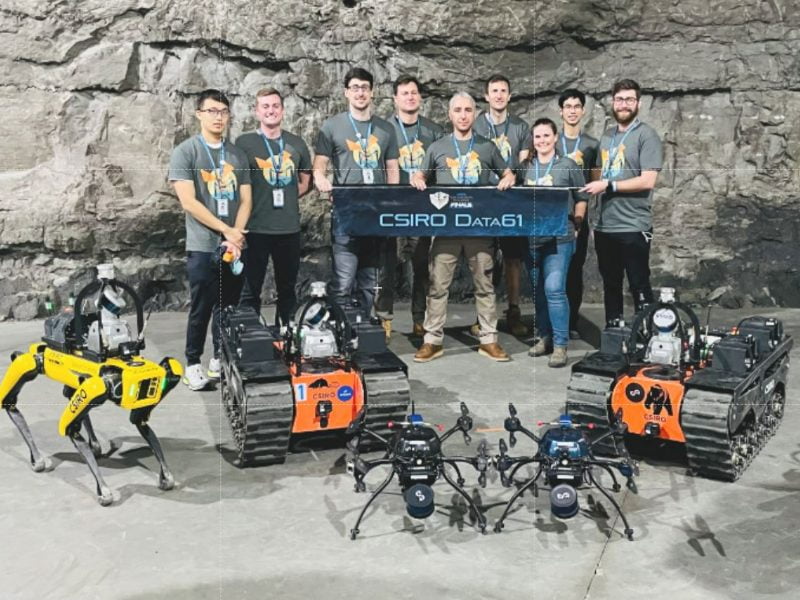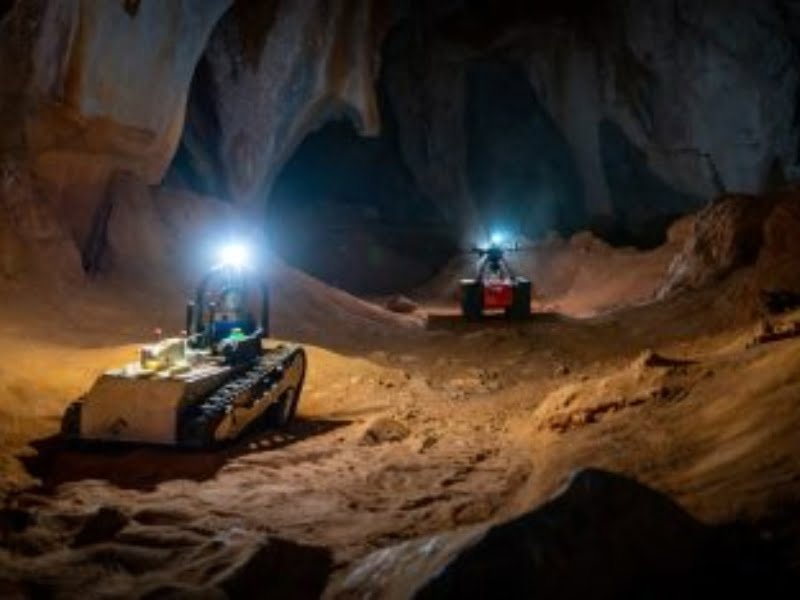After four days of intense competition among autonomous robotics experts from around the world, the team of collaborators from CSIRO Data61, Georgia Tech and Aussie startup Emesent was awarded second place in the ultra-prestigious DARPA Subterranean Challenge.
The silver medal placing in what is known as the ‘Olympics for Robotics’ followed “a nail-biting tiebreaker” after initially scoring equal points with team Cerberus – the eventual winner – a global collaboration that included the University of Nevada, University of California Berkeley, and Oxford university.
It was the first time an Australian team had made it to a DARPA challenge final – which follows a three-year program of competitive activity – and cements Australian reputation as a leader in a variety of autonomous vehicle technologies.

The DARPA Subterranean or ‘SubT’ Challenge seeks novel approaches to rapidly map, navigate, and search underground environments during time-sensitive combat operations or disaster response scenarios.
The teams were competing for a top prize of US$2 million, with the second place Australians taking home US$1 million. The CSIRO-led team was made up of nearly 30 people from the Data61 Robotics and Autonomous Systems Group. Students from QUT and the University of Queensland, as well as partners GeorgiaTech and Emesent – a startup that was spun out of CSIRO Data61.
The CSIRO Data61-led outfit was one of seven teams invited to participate in the three year challenge, receiving funding from DARPA as a research partner.
The CSIRO Data61 – Emesent – Georgia Tech journey to the DARPA Subterranean Challenge began more than three years ago under former Data61 chief executive Adrian Turner. Along the way, Emesent was spun out of CSIRO, attracting venture funding from Main Sequence and later US fund In-Q-Tel, largely on the strength of its success in the DARPA challenge.
The team created 3D maps of underground environments through LiDAR (Light Detection and Ranging) scanners mounted on legged robots, as well as unmanned aerial vehicles able to fly in GPS-denied environments without a human controller.
The Emesent – CSIRO Data61 – Georgia Tech team deployed a fleet of six robots, including two Hovermap-enabled drones (an Emesent-developed commercial product), two tracked robots and two quadruped robots.
All were equipped with the ability to explore autonomously while building a unified 3D map in real-time by sharing their local map data through a wireless mesh network which they formed.
Emesent developed the autonomous drone capability while CSIRO Data61 developed the ground-based robot capability.
The framework for coordination and task allocation between the robotics was provided by The Georgia Institute of Technology.
“This is an incredible outcome and the result of many years of hard work and collaboration by our team. A big thank you to all the people who helped with this project,” Emesent co-founder and chief technology officer Dr Farid Kendoul said.
“We’re so proud of the contributions that Emesent has made in the last three years to advance the state-of-the-art in robotics and showcase the capabilities of Australian companies on a global stage. Congratulations Cerberus.”

Although Emesent has deployed its Hovermap drone autonomy and mapping capability commercially since 2019, combining this with autonomous ground robot capability opens up a host of exciting and valuable future applications.
“Having a fleet of driving, walking and flying robots that are achieving complex missions autonomously and collaboratively is a major technological milestone and an important step towards using autonomous systems for saving lives and helping people,” Dr Kendoul said.
“We’ll continue to push the boundaries of GPS-denied autonomy and mapping at Emesent and we’re excited to see this have further impact in many industries.”
The CSIRO Data61 – Emesent – Georgia Tech journey to the DARPA Subterranean Challenge began more than three years ago under former Data61 chief executive Adrian Turner. Along the way, Emesent was spun out of CSIRO, attracting venture funding from Main Sequence and later US fund In-Q-Tel, largely on the strength of its success in the DARPA challenge.
Do you know more? Contact James Riley via Email.

